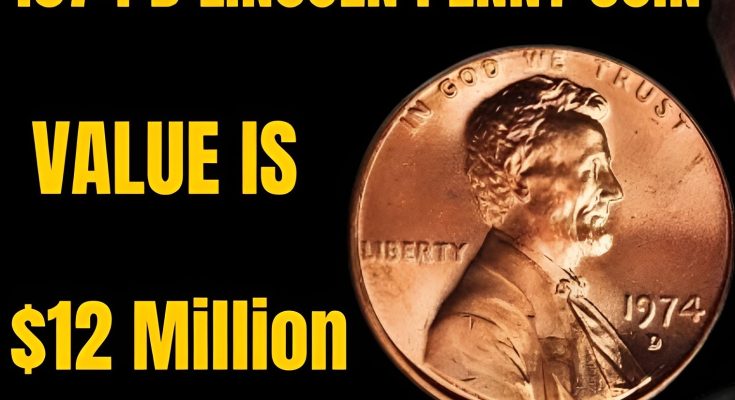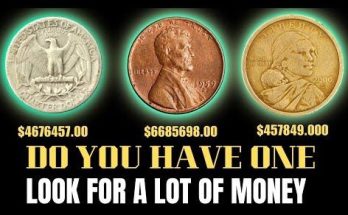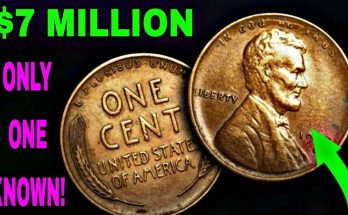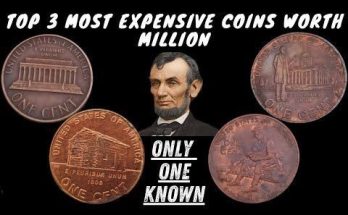Rare 1974-D Lincoln Penny Worth $12 Million? The Truth Behind This Incredible Coin Discovery!
Every coin collector dreams of that one magical moment — the day they find a rare coin worth a fortune. And in the world of numismatics, few stories stir more curiosity than the claim that a 1974-D Lincoln Penny could be worth as much as $12 million. With headlines spreading across social media and YouTube videos boasting of this extraordinary find, it’s time to separate fact from fiction and dig into the real story behind the 1974-D Lincoln penny.
In this post, we explore what makes a coin valuable, the history of the 1974-D penny, and whether there’s any truth to the staggering claim that a single one-cent coin could fetch a multi-million-dollar price tag.
🔍 The Basics: What Is the 1974-D Lincoln Penny?
The Lincoln cent, featuring the profile of President Abraham Lincoln, has been in circulation since 1909. The 1974-D Lincoln penny, minted in Denver, is one of the billions of Lincoln cents produced over the decades. Like most other pennies of its era, the 1974-D was made primarily of copper (95% copper, 5% zinc).
But what sets this coin apart? Why would anyone believe a common-looking penny could be worth millions?
💰 $12 Million Claim: Where Did It Come From?
The image shown here boldly states:
“1974 D Lincoln Penny Coin – Value is $12 Million”
This eye-catching headline has appeared in social media posts, videos, and coin forums — sparking interest from collectors and casual coin owners alike.
But here’s the truth: under normal circumstances, a 1974-D Lincoln penny is worth only its face value — one cent — unless it has extremely rare errors or a unique history.
So what could possibly make a 1974-D penny worth more than $10 million?
🧪 The Rare Aluminum Penny Experiment
To understand the confusion, we need to rewind to 1973-1974. During that time, due to rising copper prices, the U.S. Mint began experimenting with making pennies from aluminum instead of copper to cut costs.
In 1974, the Mint struck about 1.5 million aluminum pennies as test coins. These coins were never meant for circulation and were supposed to be destroyed. However, a few test coins escaped — and those that survived became extraordinarily rare and highly valuable.
Most of these aluminum cents were made at the Philadelphia Mint (with no mint mark). However, only one known example of a 1974-D aluminum penny has ever surfaced — and it caused a sensation in the coin world. The coin was considered a legal issue by the U.S. Mint, and attempts were made to retrieve or confiscate it. Eventually, it was returned to the Mint, and its value was never truly tested on the open market — but some experts speculated it could be worth several million dollars if legally allowed to be sold.
This is likely the origin of the $12 million claim — but it only applies to an ultra-rare 1974-D aluminum penny, not the common copper version.
🧭 Key Differences Between Common and Rare Versions
So how can you tell if your 1974-D penny is worth a fortune?
Here are the basics:
-
Weight: A regular copper 1974-D penny weighs around 3.11 grams. An aluminum version would weigh about 0.93 grams. A simple kitchen scale can help determine this.
-
Color: Aluminum pennies are a lighter silver color, unlike the typical reddish-brown or copper tone.
-
Metal composition: Copper vs aluminum is a major factor. You’d need a proper metal analysis to confirm this.
If your 1974-D penny is the standard copper version, it is not rare and not worth $12 million — no matter how shiny or pristine it may appear.
⚠️ Beware of Viral Claims and Clickbait
In the age of viral videos and social media posts, it’s easy to get swept up in sensational headlines. Many YouTube thumbnails and TikTok posts use exaggerated claims to grab attention — and while they might be entertaining, they can mislead people into believing that common coins are worth life-changing amounts.
As of today, there is no publicly confirmed sale of any 1974-D penny for $12 million. The only coin with potential for such a value would be the rare and possibly illegal-to-own 1974-D aluminum penny, of which only one is known.
🏆 So, What Should You Look for?
If you’re interested in coin collecting or checking your pocket change for rare finds, here are some general tips:
-
Look for mint errors: Double dies, off-center strikes, and planchet errors can dramatically increase a coin’s value.
-
Condition matters: Coins in uncirculated or proof condition are often worth more than heavily worn ones.
-
Know the market: Use reputable sources like PCGS, NGC, and the Red Book (Guide Book of United States Coins) for accurate pricing.
-
Get coins appraised: If you suspect you have a rare coin, have it graded by a professional coin grading service.
🔚 Final Thoughts
The story of the 1974-D Lincoln penny is a fascinating mix of fact, rumor, and hope. While it’s unlikely that your average 1974-D copper penny is worth millions, the legend of the aluminum version adds just enough intrigue to keep collectors dreaming.
If you ever come across a silvery 1974-D penny that feels unusually light — don’t spend it. You might just be holding a piece of coin history worth fighting for.
Let me know if you want a shorter version for social media, or if you’d like to add SEO tags, hashtags, or titles for YouTube or blog use!



